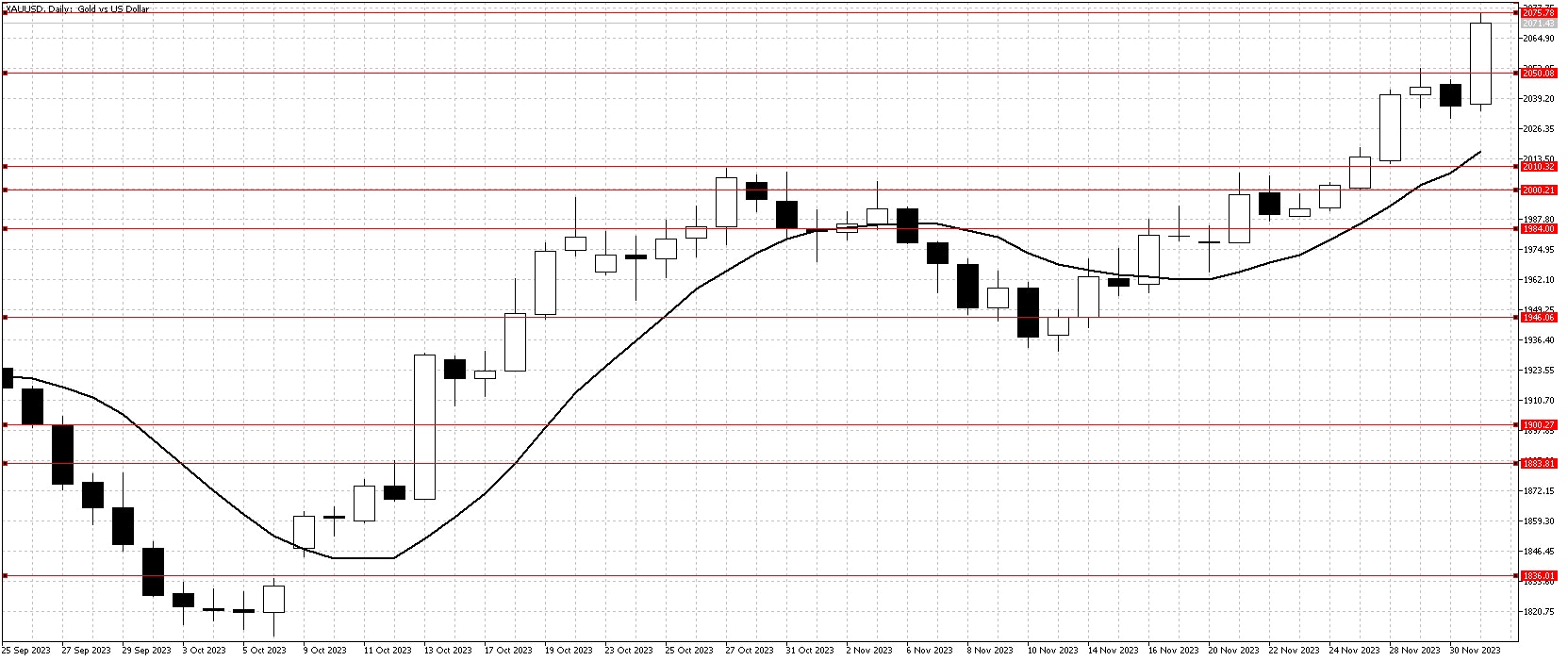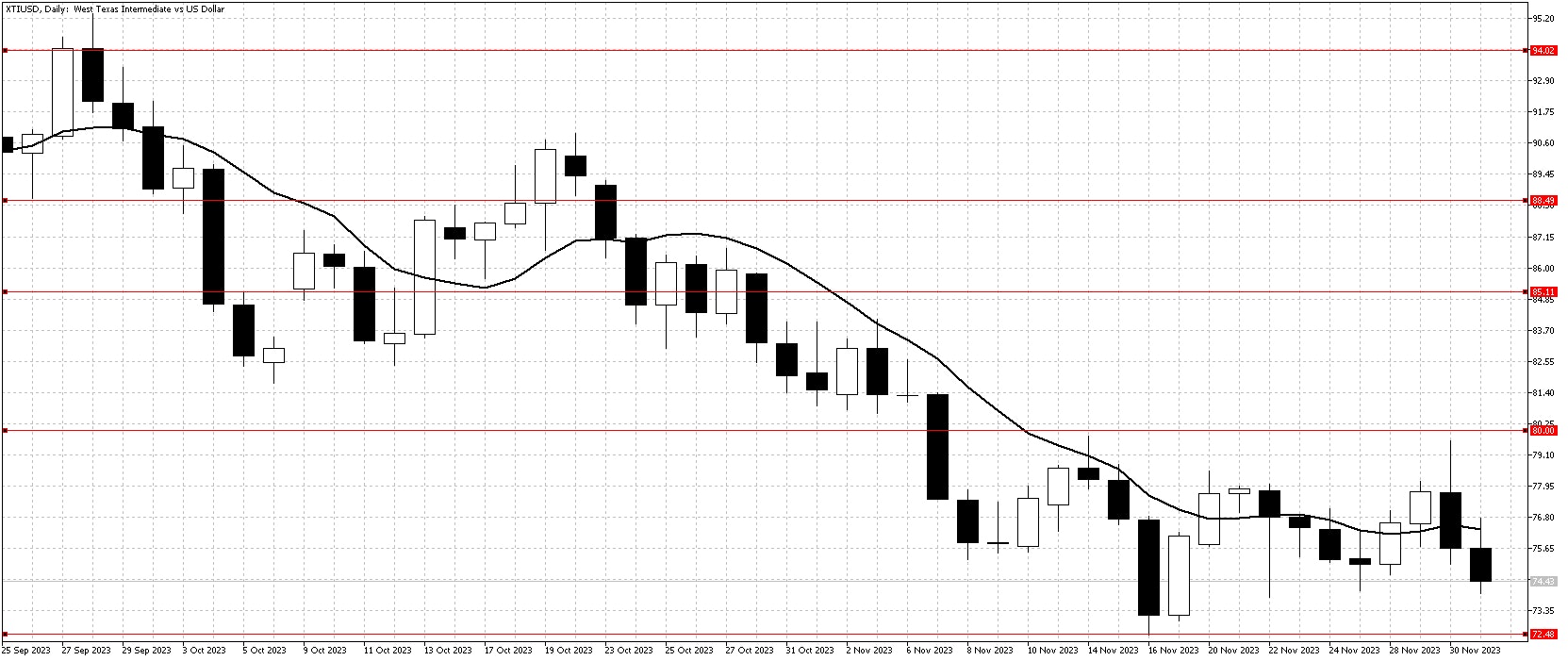Nick Goold
Gold
Gold enjoyed an impressive surge, reaching a seven-month peak, primarily driven by declining U.S. interest rate expectations and a weakening U.S. dollar. The U.S. Federal Reserve Chair, Jerome Powell, recently acknowledged the softening inflation data but simultaneously emphasized that core inflation remains concerningly high. This stance by the Fed Chair saw traders reduce their expectations regarding future U.S. interest rates.
The U.S. Treasury bond market movements were the trigger for Gold's rise. Notably, the 10-year U.S. Treasury bond yields declined by 0.2% to 4.2% last week. Additionally, geopolitical tensions, particularly in the Middle East, continue to add to Gold's allure as a safe-haven asset.
As the market's focus shifts towards the $2,080 resistance level, a potential breakout could trigger a flurry of buying orders. However, the market appears overbought in the short term following a wave of traders exiting short positions last Friday. While the market is overbought, selling at these levels is risky. Traders might find it better to wait for prices to retrace closer to the 10-day moving average before buying Gold.

Resistance: 2075, 2080, 2100
Support: 2050, 2010, 2000, 1984, 1946, 1900, 1884, 1836
WTI
Last week, West Texas Intermediate (WTI) crude experienced a notable rise, momentarily reaching the crucial $80 resistance level. This uptick was partially influenced by the anticipation surrounding the OPEC+ meeting. However, the momentum faltered, and WTI failed to secure a higher closing. This shift occurred after OPEC+ producers, which include major oil players like Saudi Arabia and Russia, announced voluntary oil output cuts for the first quarter of 2024. The decision, involving cuts close to 2 million barrels per day (bpd), initially sparked optimism. But it eventually fell short of market expectations, leading to a tempered reaction in the WTI prices.
The composition of the announced cuts further impacted the market's response. Notably, a significant portion of the reduction, approximately 1.3 million bpd, was an extension of the existing voluntary curbs by Saudi Arabia and Russia. This revelation somewhat diluted the announcement's impact, indicating a lesser degree of change in the global oil supply than initially perceived. Despite a weakening U.S. dollar, which typically bolsters WTI, the sentiment in the oil market remained bearish. This sentiment was evident as WTI struggled to maintain its upward trajectory following the OPEC+ announcement.
The market finished the week under pressure, indicating that a test of the support level at $72.5 might be imminent. Given the market's range-bound behaviour, large movements seem unlikely this week. A potential trading strategy in this scenario is to seek opportunities against prevailing market trends when prices deviate substantially from the 10-day moving average.

Resistance: 80.00, 85.10, 88.50, 94.00
Support: 72.50, 70.00

